Agriphila straminella
([Denis & Schiffermüller], 1775)
-
 Subfamily: Crambinae
Subfamily: Crambinae -
 Wingspan: 16-23 mm
Wingspan: 16-23 mm -
 Flight period: Jun - Aug
Flight period: Jun - Aug -
 Spread:Uncommon
Spread:Uncommon -
 Host plants: Poaceae
Host plants: Poaceae
Information
The Agriphila straminella is a moth of the Crambidae family, subfamily Crambinae, with a wingspan of 16-23 mm.
The species is found in almost all of Europe with the exception of the islands of the Mediterranean, Greece and Ukraine.
It has also been found in the Iberian peninsula and in Italy even if it is rather scarce in our country and from which it is absent from the islands. *
In the north of the distribution area extends to Lapland, and Siberia to the Russian Far East.
In South Asia with prevalence in Asia Minor, the Caucasus, Kazakhstan and Central Asia.
It is one of the "grass" moths with the simplest livery. The background color of the wings ranges from pale yellow to very light brown.
The veins are highlighted by darker dusting. A darker line runs along the edge of the costa. The edge of the wing is fringed and has a row of black dots.
The hind wings are white with shades of brown near the edge, the head and thorax are in the background color of the front wings,
the abdomen light gray-brown. The palps are ciliated.
The Agriphila straminella is univoltina the flight period goes from June to August.
Habitats are both dry and relatively fresh open meadows. They are crepuscular and / or nocturnal moths, they can be found near the artificial lights.
During the day the males, if disturbed, come out of their hiding places, the females, on the contrary, are hidden under the tufts of grass and tend to live longer.
The egg is oval with the surface strictly ribbed forming a fine reticular pattern.
It overwinters in the larva stage. The caterpillar can be yellowish gray, brownish gray or light reddish gray with a relatively small black head.
Sometimes the head and anal shield are also light brown and shiny.
Caterpillars live in a vertical silk tube that is connected to grass stems near the ground and feed on and around the stems.
The pupa forms in an egg-shaped cocoon covered with pieces of grass.
The larvae feed on Poaceae eg. Festuca ovina and Poa pratensis, but can also be found among the stems of Triticum (wheat) and Hordeum (barley).
* Lepidoptera mundi https://lepidoptera.eu/ - Fauna Europea https://fauna-eu.org/
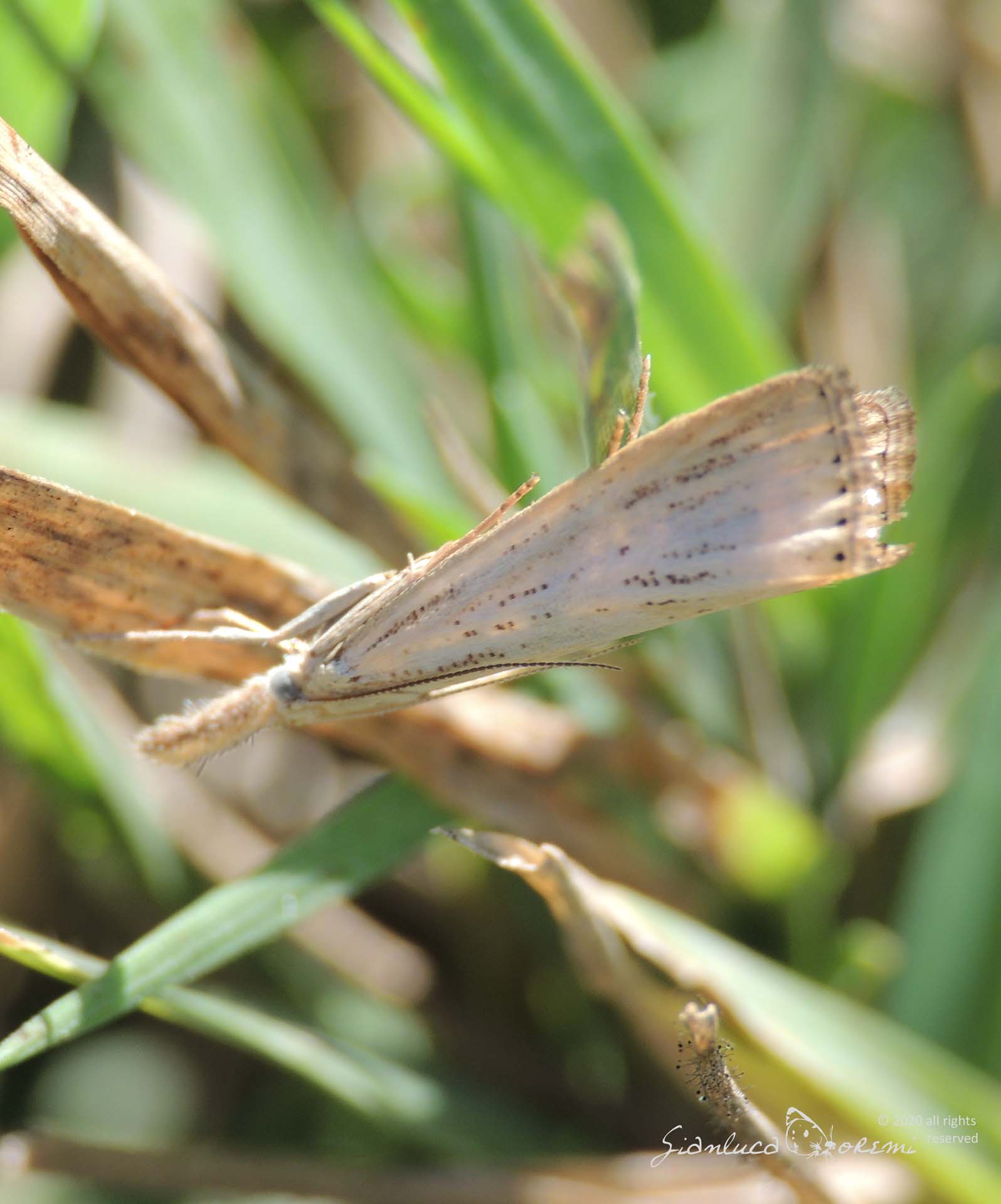
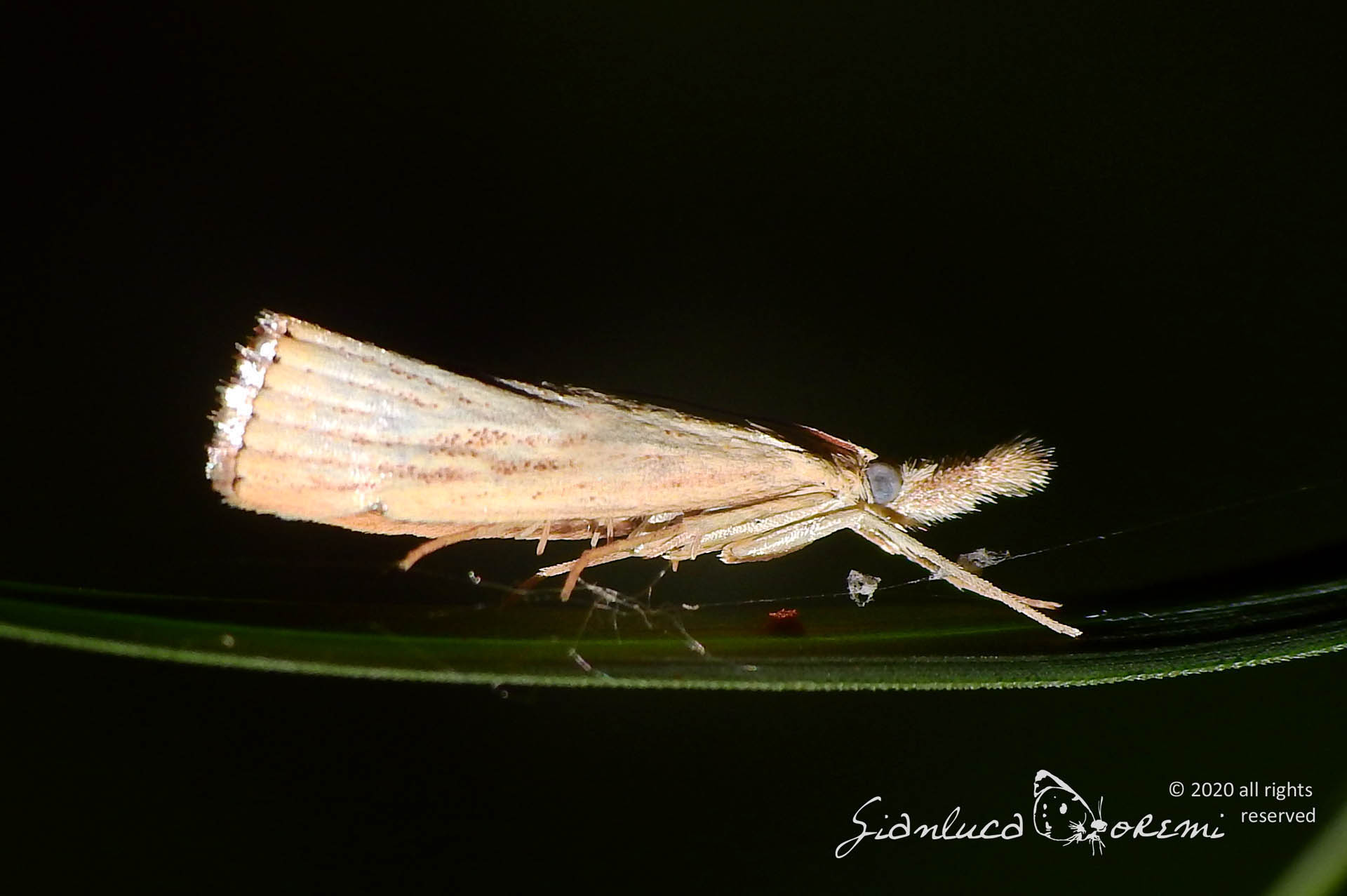
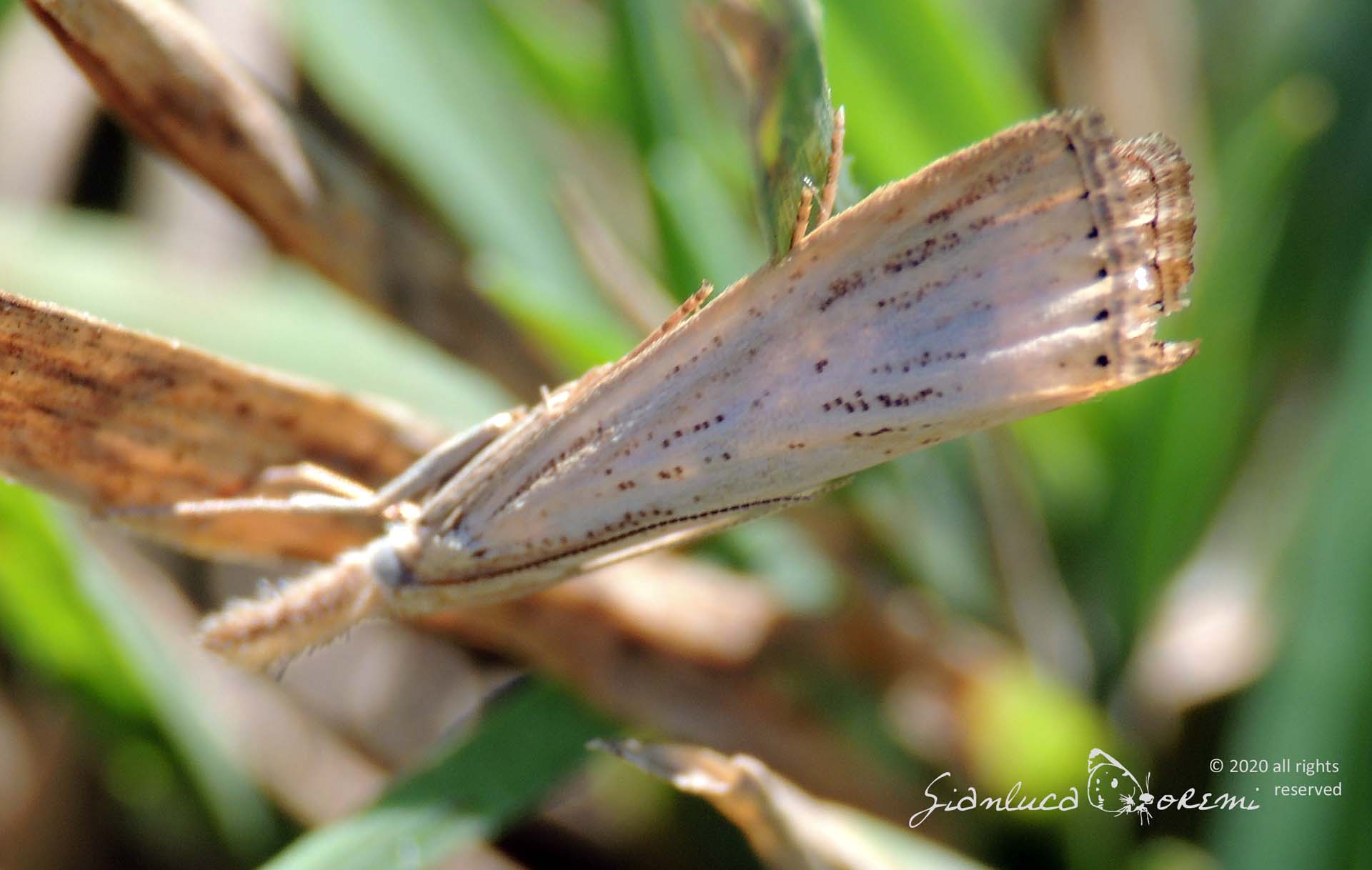
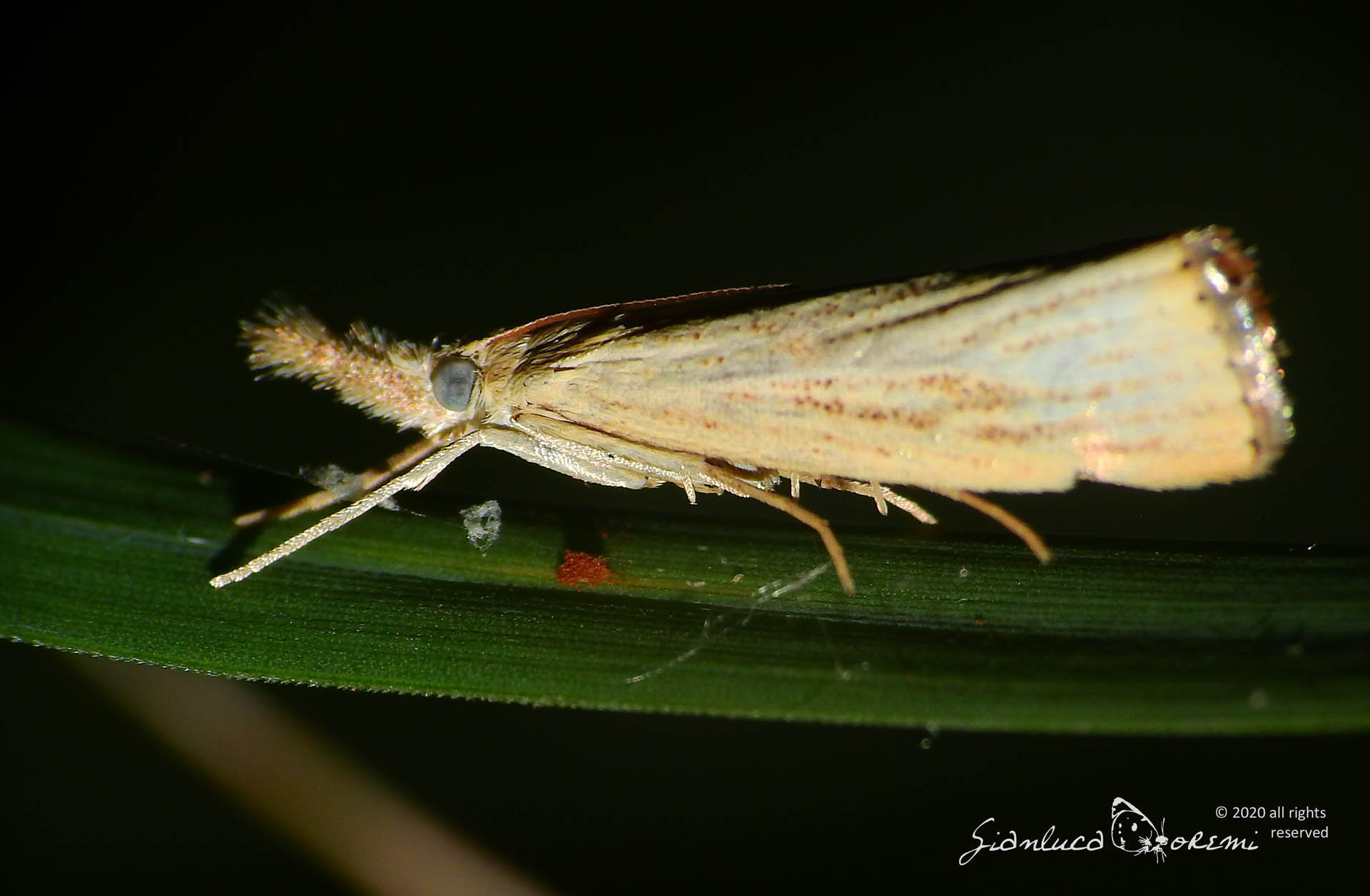
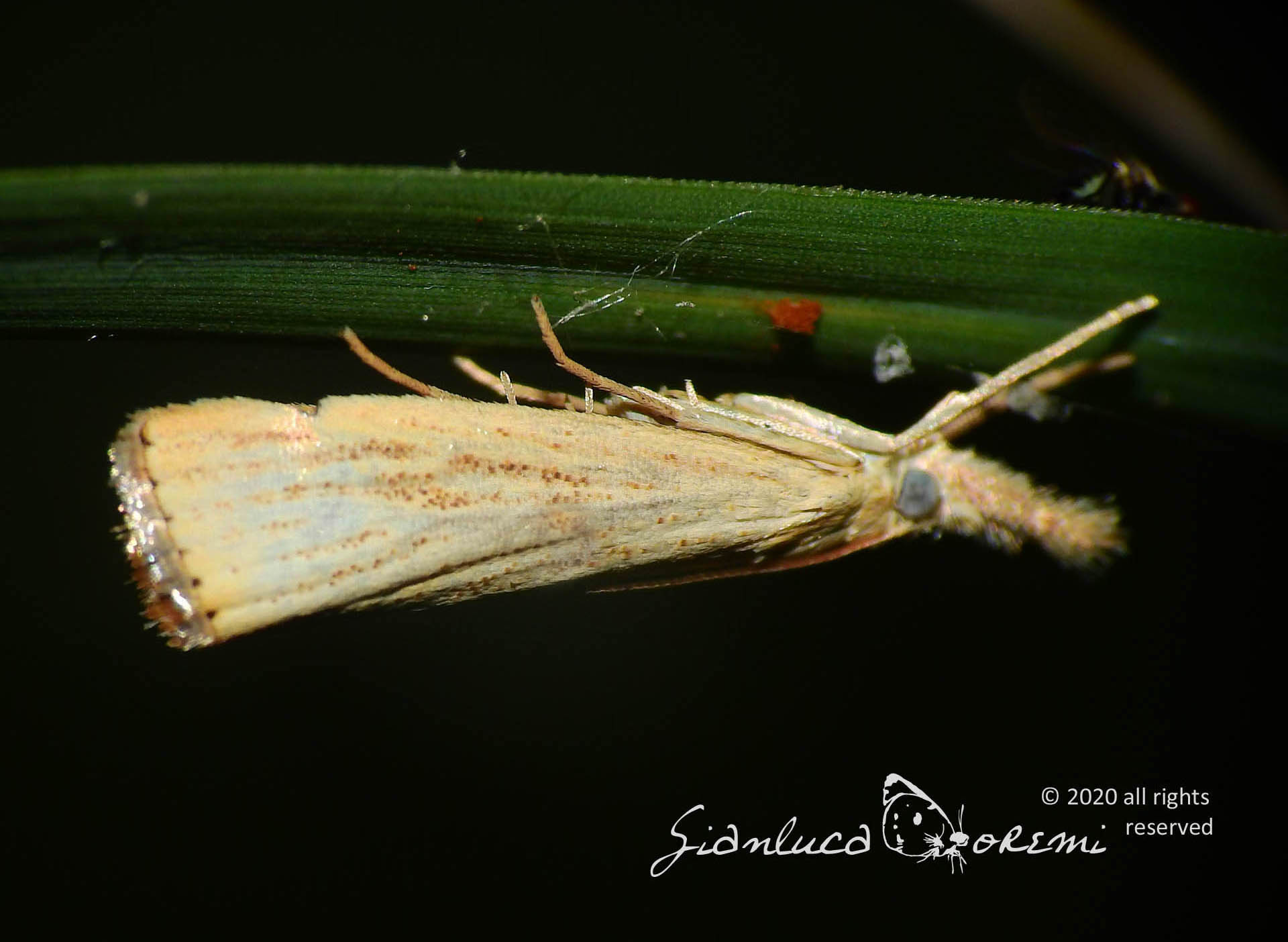


 EN
EN ITA
ITA
Social e pubblicazioni